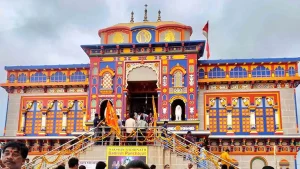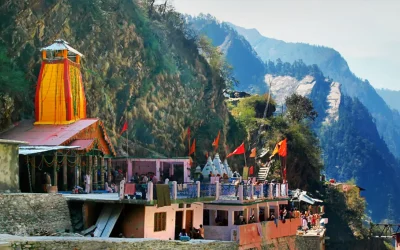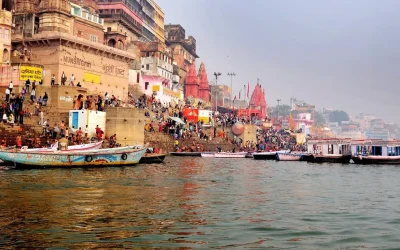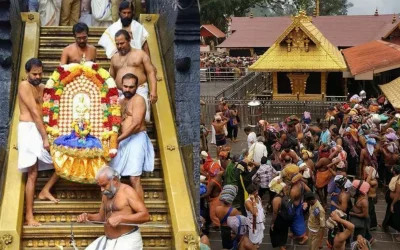History of Badrinath Temple
Nestled amidst the majestic Himalayas, the Badrinath Temple is a testament to India’s rich spiritual heritage and architectural splendour. Dedicated to Lord Badrinath, an incarnation of Lord Vishnu, this sacred pilgrimage site attracts devotees and tourists worldwide. Let’s embark on a comprehensive journey to explore the history, significance, rituals, and cultural essence of the revered Badrinath Temple.
History and Legends
The history of Badrinath Temple dates back thousands of years, steeped in myths and legends of Hindu mythology. According to popular belief, the temple was established by Adi Shankaracharya, the 8th-century Hindu philosopher and reformer who propagated the Advaita Vedanta philosophy. He revived and renovated the temple to its present glory.
Legend says that Lord Vishnu meditated here for countless millennia under the Badri tree (Jujube tree), hence the name Badrinath. The temple is one of the 108 Divya Desams (holy abodes of Vishnu) mentioned in ancient Hindu scriptures. Its location, amidst the serene and breathtaking surroundings of the Garhwal Himalayas, adds to its mystique and spiritual significance.

Architectural Marvel
The Badrinath Temple showcases exquisite North Indian temple architecture, characterized by its towering structure, intricate carvings, and vibrant colours. Built in the traditional wooden style with a cone-shaped roof (shikhara), the temple is primarily stone and stands against snow-capped peaks. The facade is adorned with intricate sculptures of various deities and mythological figures, reflecting the artistic brilliance of ancient Indian craftsmen.
Inside the temple, the sanctum sanctorum houses the 3.3-foot-tall black stone statue of Lord Badrinath, intricately carved and adorned with jewels. The idol is flanked by statues of other gods and goddesses from Hindu mythology, creating a divine ambience that resonates with spiritual seekers and pilgrims.
Significance and Spiritual Journey
For devout Hindus, a pilgrimage to Badrinath Temple holds immense spiritual significance. It is believed that visiting this sacred shrine washes away sins and grants salvation (moksha). The temple forms a crucial part of the Char Dham Yatra, a revered pilgrimage circuit that includes Kedarnath, Gangotri, and Yamunotri. Pilgrims undertake this arduous journey to seek blessings, perform rituals, and attain spiritual enlightenment amidst the pristine Himalayan landscapes.
Rituals and Festivals
The daily rituals at Badrinath Temple are meticulously followed according to Vedic traditions. The temple opens for pilgrims from early April to early November each year, coinciding with the summer and autumn months when the region is accessible. The timings typically start in the early morning and extend until late afternoon, with specific rituals performed at designated times.
One of the most significant festivals celebrated with great pomp and enthusiasm is the Badri-Kedar Festival, which marks the closing of the temples at Badrinath and Kedarnath during winter. The ceremonial procession includes elaborate rituals, chanting of hymns, and cultural performances, offering a glimpse into the vibrant religious traditions of the region.
Accessibility and Accommodation
Located in the Chamoli district of Uttarakhand, India, reaching Badrinath Temple requires a journey through winding mountain roads, offering breathtaking views of the Alaknanda River and the surrounding peaks. The nearest town is Joshimath, a base for pilgrims and tourists. Accommodation options range from modest guesthouses to Dharamshala (pilgrim rest houses), catering to visitors’ needs during the pilgrimage season.
Challenges and Conservation Efforts
Despite its remote location and harsh climate, Badrinath Temple faces challenges related to preservation and conservation. Efforts are ongoing to maintain the temple’s structural integrity, protect its artistic heritage, and ensure the safety of pilgrims amidst natural calamities such as landslides and heavy snowfall.
Conclusion: A Pilgrimage of Faith and Serenity
In conclusion, the Badrinath Temple is a beacon of spiritual enlightenment and cultural heritage in the heart of the Himalayas. Its ancient roots, architectural splendour, and profound religious significance continue to inspire millions of devotees and travellers seeking solace and divine blessings. As we delve into its history, rituals, and timeless allure, we embrace the essence of faith and embark on a journey that transcends the ordinary, connecting with the divine in the lap of nature’s grandeur.
Visiting Badrinath Temple isn’t just a physical journey; it’s a spiritual odyssey that leaves an indelible mark on the soul, resonating with the eternal call of devotion and the timeless quest for transcendence.






